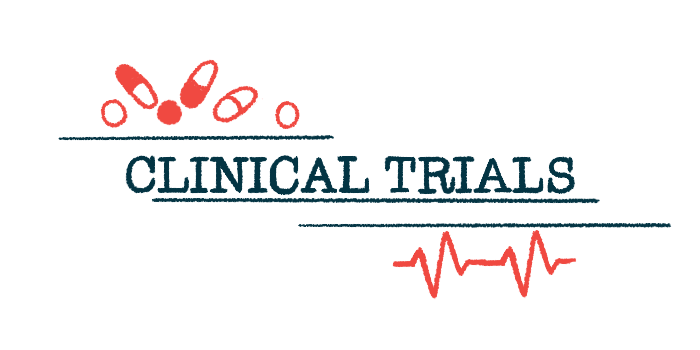Apitegromab use over three years continues to aid SMA patients
Motor skill gains noted with muscle-targeted therapy in Phase 2 extension trial
Written by |

Add-on treatment with Scholar Rock’s muscle-targeted therapy apitegromab continues to stabilize or improve motor function for young spinal muscular atrophy (SMA) types 2 and 3 patients who entered the study unable to walk, according to a three-year update from the TOPAZ clinical trial and its extension phase.
Sustained improvements in patient-reported outcomes also continue to be noted.
Updated findings were presented by Thomas Crawford, MD, a pediatric neurologist with Johns Hopkins Medicine and the TOPAZ trial’s lead investigator, at the recent SMA Research & Clinical Care Meeting in Orlando, Florida, in a pair of back-to-back oral presentations.
“We are excited to share these new Phase 2 data that support apitegromab’s long-term durability of effect and consistent tolerability and safety profile,” Jay Backstrom, MD, president and CEO of Scholar Rock, said in a company press release. “The results further strengthen our confidence in apitegromab’s therapeutic potential for patients with SMA.”
Apitegromab designed to increase muscle mass, motor function in SMA
Enrollment is ongoing for the pivotal Phase 3 SAPPHIRE trial (NCT05156320) at sites across the U.S. and Europe, and the company expects to finish recruitment in the coming months. The yearlong trial seeks to confirm the safety and efficacy of apitegromab as an add-on therapy in up to 204 SMA types 2 or 3 patients, ages 2 to 21, who are unable to walk but can sit independently.
Positive SAPPHIRE trial data would support a regulatory application for apitegromab’s approval for this patient group.
Apitegromab is a lab-made antibody that works to prevent activation of the mature form of myostatin, a protein that resides in skeletal muscles and suppresses muscle growth.
In blocking myostatin, apitegromab is expected to boost muscle mass and preserve motor function in SMA patients, when used alone or in combination with approved SMA therapies. SAPPHIRE specifically will test it as an add-on to the injection treatment Spinraza (nusinersen) and the oral therapy Evrysdi (risdiplam).
The open-label TOPAZ clinical trial (NCT03921528) evaluated apitegromab’s safety and efficacy as an additional or single therapy in 58 children and young adults, ages 2-21, with SMA types 2 or 3. Patients in the study, whose extension is due to conclude in April, were assigned to one of three groups.
The first group consisted of 20 type 2 nonambulatory patients, ages 2 and older, who had started treatment with Spinraza before age 5, and the second included 15 nonambulatory types 2 and 3 patients, ages 5-21, who started Spinraza at or after age 5. The third group covered 23 type 3 ambulatory patients, ages 5-21, with 12 also using Spinraza.
All received monthly into-the-vein infusions of apitegromab at a low (2 mg/kg) or high (20 mg/kg) dose and were followed for one year in the main trial.
Top-line TOPAZ data indicated stable or better motor function after a year of treatment for most patients, with motor gains particularly seen in younger patients given the high dose.
Participants then had the option to enter into the trial’s extension phase, where all are receiving apitegromab at 20 mg/kg for up to three more years. Patients initially using Spinraza continue to do so.
Consistent with the two-year analysis spanning TOPAZ and the start of its extension study, three-year data now show that apitegromab continues to be associated with sustained gains in motor function for patients in the two nonambulatory groups. More than 90% of these 35 people stayed with treatment in the extension, the company reported.
Gains in HFMSE and RULM scores at 36 months in nonambulatory patients
Specifically, patients at three years showed a mean increase of 4 points on the Hammersmith Motor Scale-Expanded (HFMSE) relative to measures at the trial’s start, marking better motor function. A mean increase of 2.4 points on the Revised Upper Limb Module (RULM), a measure of upper limb function, also was noted.
Some patients reached new developmental motor milestones, including an ability to walk alone or with aid, or maintained existing ones while on treatment.
Patients or their caregivers also reported a sustained easing in fatigue and a better ability to perform daily activities over three years. These improvements were generally consistent with motor gains, according to Scholar Rock.
“In addition to the sustained benefit observed with consistent HFMSE scores, we saw continued improvement in RULM scores, and reductions in fatigue as reported by patients — all of which can be important factors in performing activities of daily living,” Backstrom said.
Apitegromab’s safety profile at three years was consistent with previous reports, with no new safety findings. Most adverse events were mild-to-moderate, the company reported, and continued to include headache, upper respiratory tract infection, fever, cough, and the common cold.
“These promising long-term data highlight the therapeutic potential of muscle-targeted therapies, such as apitegromab, to help those with SMA address persistent weakness,” Crawford said.
Available SMA therapies work to boost production of the SMN protein that’s lost in SMA, helping to prevent additional motor nerve cell loss. But muscle weakness can persist.
“While SMN-targeted therapies play an important role in preventing further loss of motor neurons, many people still experience persistent or progressive symptoms due to preexisting motor neuron degeneration,” Crawford said. “Incorporating a muscle-targeted therapy with apitegromab’s clinical profile into the treatment paradigm could allow patients to sustain or potentially achieve new gains in motor functioning.”







